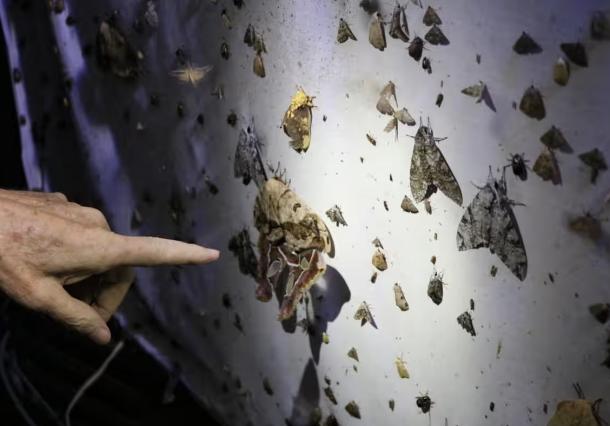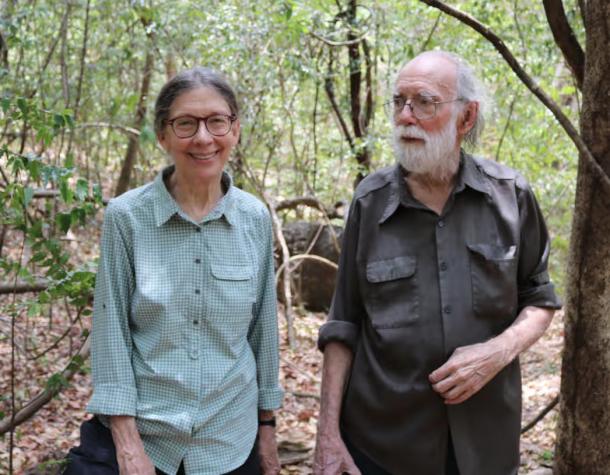
A light trap for moths in ACG. On one sheet in 1978, 3,000 species were identified. Photo by Patrick Greenfield.
“There’s just no moths on the sheet.”
That’s how Dr. Dan Janzen describes what he sees today when he sets up a light trap in Costa Rica’s Área de Conservación Guanacaste (ACG)—a striking contrast to the past, when “the sheet would be absolutely plastered with moths – tens of thousands of them.”
Dan and his longtime collaborator and wife Dr. Winnie Hallwachs are featured in a recent article in The Guardian, part of its Age of Extinction series. This installment focuses on the alarming decline of insects—what many ecologists are calling a “new era” of ecological collapse.
Even in protected areas like ACG, far from agricultural or urban development, the numbers are dropping. “In the parts of Costa Rica that are heavily hit by pesticides, the insects are completely wiped out,” Winnie says. “But what we see here in the preserved areas—areas that, as far as we can tell, are free of these destructive chemicals—is that insect numbers are still going down horrifyingly dramatically.”
This collapse is rippling through the ecosystem. Entomologist David Wagner notes sharp declines in birds, lizards, and other animals that rely on insects for food. Dan adds that the number of insectivorous birds in ACG is “cratering.” Bats, too, are being affected.
The clear culprit, the article explains, is global heating. As Winnie puts it, a tropical forest is like a “finely tuned Swiss watch”—but now, “one gear is spinning wildly out of time,” and that gear is the climate. The entire system is falling out of sync.
“We’re at a new point in human history,” Wagner says. “Until recently, the major drivers of biodiversity loss were habitat destruction and land degradation. But I think now climate change is by far exceeding that.”
These days, Dan is astonished if even one moth shows up at his laptop light. Decades ago, he and Winnie would set up a tent indoors just to work amid the torrents of insects flying around their computers. “We know quite a number of entomologists whose experience dates back to the ’70s, ’80s, or ’90s,” Winnie says. “One of our very good friends—he no longer has the emotional courage to hang up a sheet to collect moths at night. It’s too devastating to see how few there are.”
You can read the full Guardian article here.

Winnie and Dan in ACG. Photo by Patrick Greenfield.